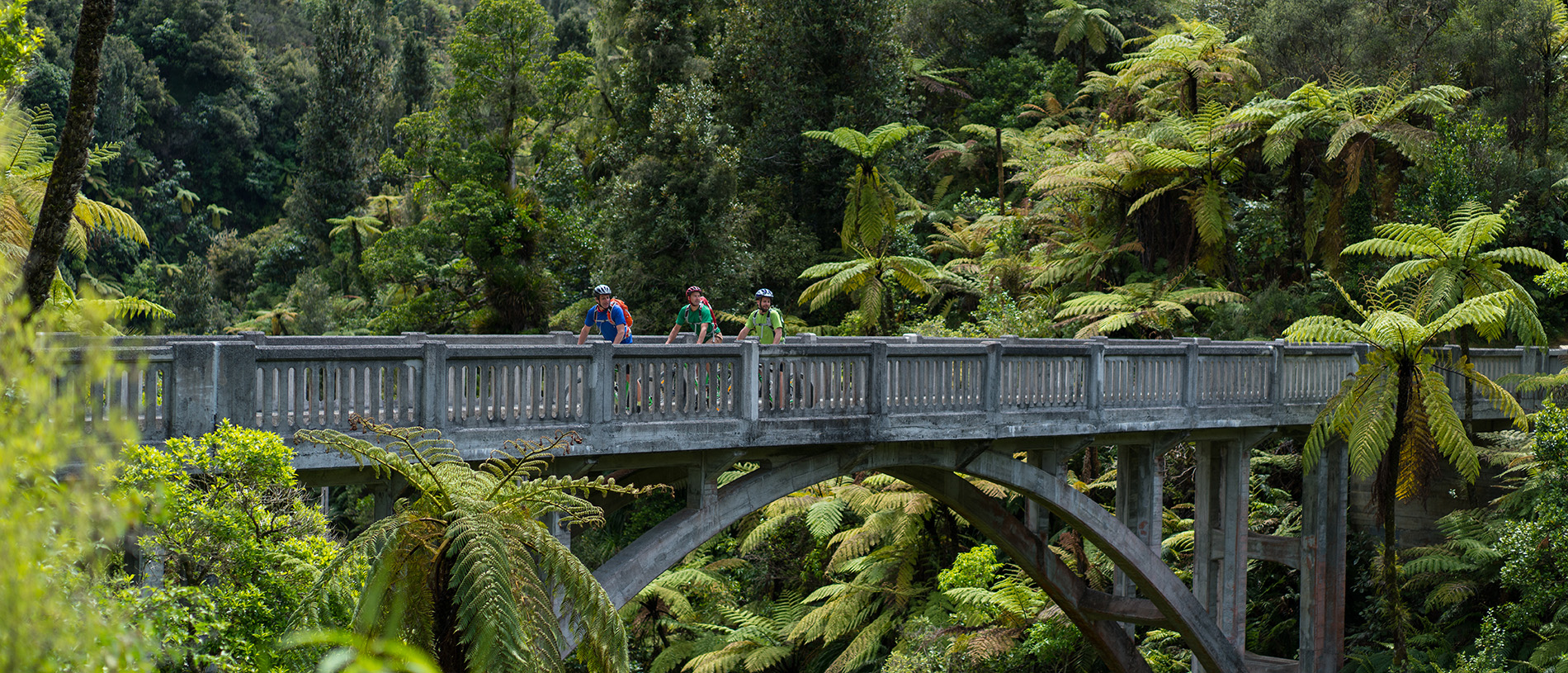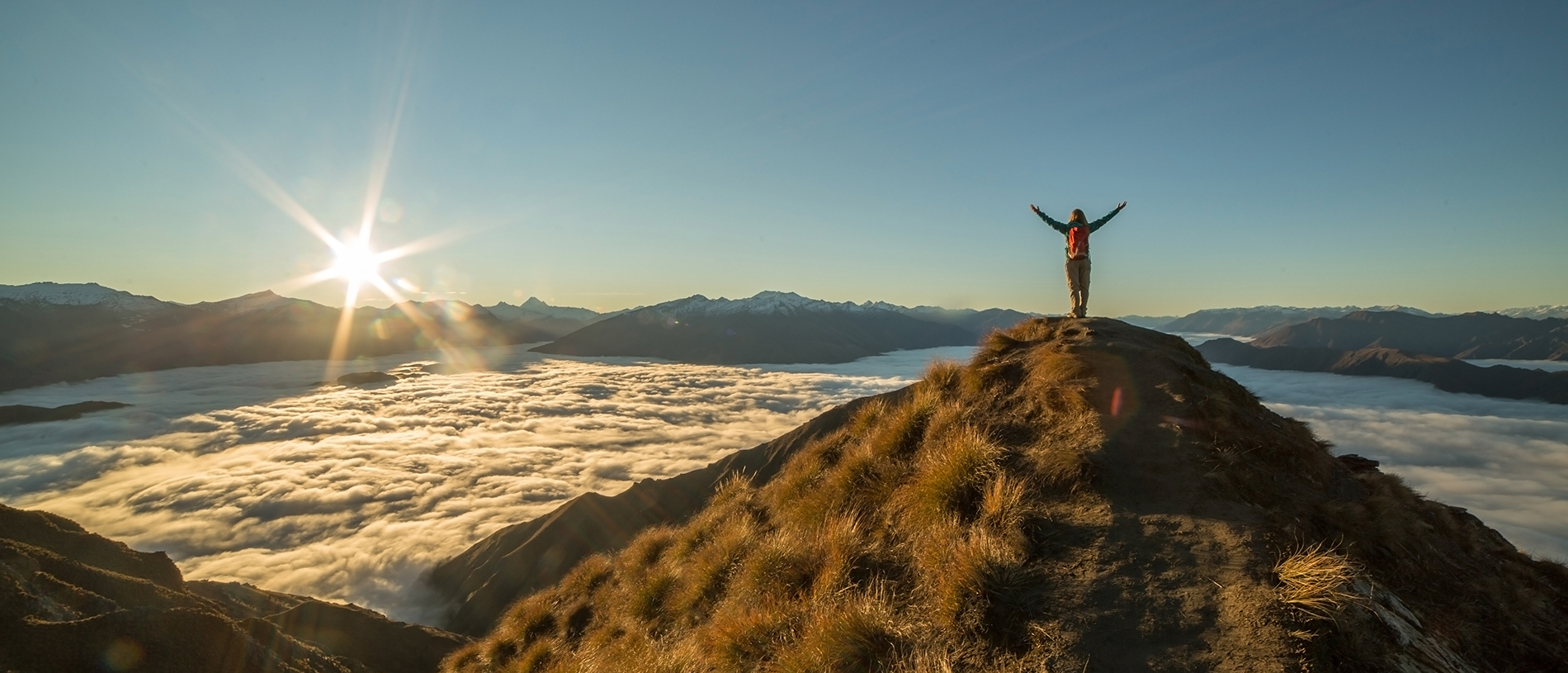
Bridge to Nowhere: stunning walking in the Whanganui National Park
Reach the enigmatic Bridge to Nowhere via the Kaiwhakauka Track or navigating the Whanganui River to the Mangapūrua Landing.

Kiwi poet John Newton once wrote that mountains are 'a story you tell about yourself, a story you are journeying into, which swallows you'.
I have previously referred to this country’s most sacred high places as 'the castles that bind our land firm', allowing me to ‘see as never before... Each time I return to the mountains of New Zealand I am reminded, yet again, of the poignancy of these observations.
In part, my worries are swallowed by the nearness of summits; the stresses of a perceived lack of success and finance and future plans soothed by the balm of thin, crisp air, a wide, cloudless sky and a decent dollop of exercise.
The curious call of a kea on the wing might echo from high cliff faces and within my mind, that cry goes some distance towards purging whatever doubts I may carry about my life path, while also perhaps highlighting the precarious nature of our mountain parrot's own plight.
Past human culling and introduced predators have almost decimated the current kea population. Their call, presence and gregarious nature are among what makes our southern mountains in particular so unique to the world. To lose them would be a tragedy.
I have spent many decades learning the skills that allow me to attempt to climb difficult mountains here and in the world’s greater ranges. There is hardship and risk to mitigate against and, more often than not, I have returned to flat ground unsuccessful in reaching a particular summit. But, for me, the main attraction is in the ‘doing’ rather than the ‘having done’.
Mountain climbing doesn’t just have to be for the experienced or those inclined to take risks. There are plenty of beautiful and spectacular summits in New Zealand that can be reached with little more than warm clothes, a decent raincoat, sturdy footwear, a detailed map, spare food and water, advice from the closest Department of Conservation office about current conditions and the weather forecast, a propensity for physical exercise and common sense.
For me, climbing mountains is the perfect blend of the physical and the mental.
Hiking or scrambling uphill – slowly, but surely gaining altitude – my mind is cleared as my body tires. The further I get above the lowlands, the simpler life becomes – the importance of breathing and placing one foot in front of the other.
The view from the summit, if and when it comes, is a bonus, a time to appreciate the immensity of the world beneath my feet and my own insignificance upon it. Somehow, the concept of this makes my mind feel expanded and compressed at the same time. And then, with a tinge of regret, I notice the time and the need to start the descent back to civilisation and ‘normal’ life.
All I have left behind are footprints. I carry with me back down the mountain a memory of new experiences and, perhaps, a new perspective. I have relied only upon myself and I can’t wait for the next opportunity to do it again.
It's important to point out that any activity in the outdoors carries a certain level of risk and a need for self-responsibility. Being properly prepared and informed is the best way to mitigate this risk. The New Zealand Mountain Safety Council, Department of Conservation, New Zealand Alpine Club and local tramping and mountaineering clubs are the best sources for information, advice and other people to experience the mountains with.
The following peaks can be safely climbed in a day IF you prepare properly AND follow the advice from the organisations listed above. The mountains should not be attempted by anyone inexperienced if there is a covering of snow or when the weather is poor. Conditions like this require a more extensive level of knowledge. If you are unsure, always contact DOC for advice beforehand.
Pirongia Mountain’s full name is ‘Pirongia te aroaro o Kahu’ or ‘The scented presence (or pathway) of Kahu’. It is the tallest in a line of old volcanoes spread across the western edge of the Waikato basin.
A complex array of ridges and narrow, steep-sided valleys make up much of the wider Pirongia Forest Park. At 17,000ha, it's the largest unbroken stand of native bush left in Waikato.
There are a number of tracks to the mountain’s summit and a hut nearby if you are inclined to stay the night. This is a special mountain, with cultural significance to the locals who live nearby.
Mount Taranaki’s lonely vigil near the western tip of the North Island draws many admirers. The mountain is considered to be one of the most symmetrical volcanic cones in the world.
While, in winter, it can be coated with a heavy layer of ice and snow, on a fine summer’s day its northern scoria slopes can be easily traversed to the summit. Be warned, this peak holds the record for the most mountaineering deaths in New Zealand, but this is as much a result of its accessibility as any objective dangers. It is not a mountain to be taken lightly and certainly only attempted by novices in the most benign of conditions.
One of the unique aspects of Taranaki is the view. It is surrounded by the ocean on three sides, making one feel like they are standing on the very edge of Aotearoa.
The forest and terrain of Mount Peel are unique and diverse, supporting a range of birds and flora. There are actually three summits, known as Big Mount Peel, Middle Mount Peel and Little Mount Peel, and it takes a very long day to traverse all of them. (Little Mount Peel might be a nice first-up effort.)
The tracks are either well signed or the route-finding obvious, and the views more than worth the effort. The nearest DOC office is in Geraldine, around 15km away.
Aoraki Mount Cook National Park is the jewel in the crown of the South Island’s Southern Alps. Non-climbing visitors can drive close to the terminal lake of the Tasman Glacier or take the walk up to Hooker Lake. Some challenge themselves with the hike up to Mueller Hut (this can get busy in summer), which offers an elevated view of Aoraki Mount Cook, our highest summit.
A not so well known, but equally spectacular, day climb is Mount Wakefield. From the Tasman Road bridge, a rough trail leads steeply up through the bush, before following an easy ridge of broken rock and scree to the summit. You should only attempt this route in settled weather and if the peak is clear of snow. The DOC centre at Aoraki Mount Cook Village will be able to advise.
A full day will be required for this spectacular track to the summit of Ben Lomond, which sits high over Queenstown. Once above the forest, the trail winds through terraces of alpine grasses to the Ben Lomond Saddle and then more steeply up to the summit. A view of Lake Wakatipu slowly widens beneath you as you gain altitude. During a clear day, the view from the summit is particularly impressive.
Again, this trail, especially above the saddle, should only be attempted in summer during fine weather and when the track is clear of snow. The DOC centre in Queenstown will be able to advise as to current conditions.